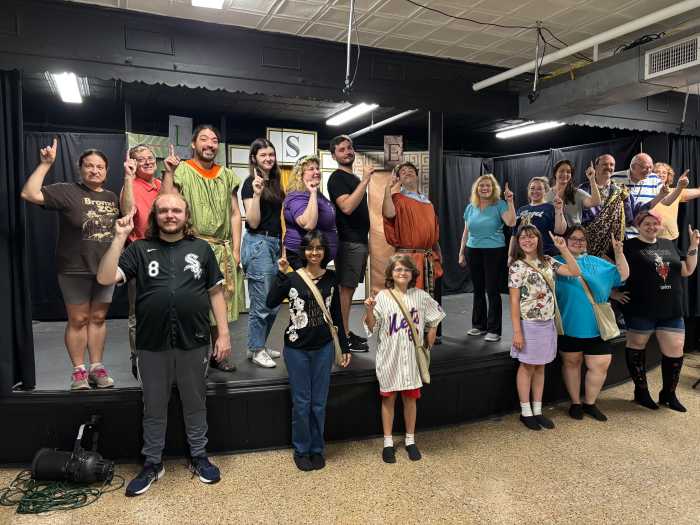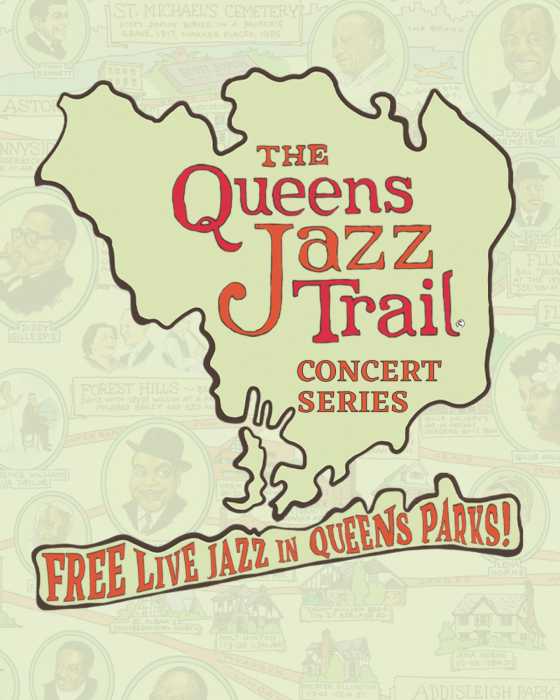By Naeisha Rose
For six weeks, Queens Library is featuring the artwork of Haitian-American artists for the Festival an Koulè (Festival of Colors) exhibit that is taking place in four of its southeast locations for the Queens Memory Project, which archives the history of the borough and its residents.
The second week of the colorful festival took place at the St. Albans branch Dec. 3 and displayed the work of ophthalmologist Dr. Francois-Ricles Gracia, a self-taught artist who was born in Haiti and inspired by his Uncle Pierre’s work.
“Since I was young, I was influenced by my maternal uncle. He used to make sculptures for Christmas and he was also the one that fixed the statue at the church when it was broken,” said Gracia. “It was a passion for me to see him painting and I would go to his house and I would spend the entire day without eating waiting to see the finished work.”
At the age of 7, Gracia realized that he was not satisfied with being an onlooker, so he started to pursue art by himself and found a mentor in a local artist named Marcel Philippe.
“The first painting I did was of the row of the houses where I lived,” Gracia said.
One of the first customers to buy a painting from him in his youth was his cousin from the city of Cap-Haïtien, but he unfortunately lost the work in a hurricane.
Growing up it was his aunt who raised him and encouraged him about his artwork.
“When I was 10 or 11, Marcel would always send me to people’s houses to do paintings,” Gracia said. “After finishing my homework, I would go paint and Marcel would pay me 50 cents, but my aunt would say, “What, only 50 cents after all this work?”
“I only needed enough money for the movies, plus he was training me.”
To make sure that he could support himself as an adult without hindering his love for art, his aunt sent him overseas for his education once he finished high school during Haitian dictator François Duvalier’s rule.
“They decided to send me to Spain …and my aunt said hold it, study medicine first and then you can do what you want, and I decided to do my studies in ophthalmology,” Gracia said.
“At that time the political climate was hot. It was when Castro was changing towards socialism. The United States was pressuring Duvalier to vote with the South American bloc to expel Castro,” he said.
The exhibit and presentation featured work of different styles incorporating different aspects of Haiti’s history and culture.
The four paintings that were focal points for his presentation focused on Gracia’s historical and symbolic work.
The first painting in the series represented his life as a Haitian-American immigrant and his Catholic school upbringing.
After studying for an important exam when he was a child, Gracia had a dream about the subject he was studying and in his dream “Mama Maria turned to me and said that everything was going to be OK. I passed and when we came to Queens, there was a church called Incarnation one block from Hillside and in the backyard of the church was a statue of the Lady of Incarnation, which reminded me of that,” he said.
Gracia’s second painting is a neoclassical work that presents musical instruments split into two straight down the middle. On the left side are voodoo instruments representing the spiritual aspect of the African diaspora in auburn and red colors, while the right side has Catholic ones in blue and white colors. The painting represents the imposition of Christianity on Haitians.
Another painting in the series features the last indigenous leader of Haiti, cacique Henry (also known as Enriquillo) meeting King Henri Christophe by a river and giving the revolutionary fighter who led Haitian independence a sword. Christophe and the free blacks stand on the earth dressed in red, blue and black military regalia of the time as the natives stand in the water adorned in tribal headdresses.
“There is a 400-hundred year difference between them, and I paint them [the native royal family] as a kind of spirit coming from the river inspiring them [Christophe and the black militants] to protect the country and to fight for the country,” said Gracia.
His last painting is of the Statue of Liberty bending down to reach out to immigrants of all background while holding up a bald eaglet.
“Lady Liberty doesn’t care about color or race, she helps everybody,” said Gracia.
At the exhibit Gracia gained several fans.
“You can see the power of his influences and how he is shaped by his experiences and how he puts it in a framework,” Haitian-American Caroline Surin said. “This is to me an expression of art that is limitless in where it can touch us,” the Long Island City resident said.
“There are a lot of influences that you can see,” said Lisa Flanzraich. “Goya, Gaugin, even Dali, “ added Flanzraich from Kew Garden Hills.
Two people who were struck by merging the history of Haiti, Cuba and the United States in his art were Surin’s daughters, Cheyenne, 15, and Sierra, 13, who are half Cuban.
“I never had a chance to sit down with an artist,” said Cheyenne.
“I mostly see art at exhibits, so it was nice to actually get the story behind the art,” she said. “Like the one where he was talking about the dream. I’ve had vivid dreams before, so it was nice that he remembered that from all those years. It was cross-cultural and I feel like we connected on that same thing.”
Sierra said,“I’m also trying to draw and he is Haitian, and I am half Haitian, so it was nice to see what he has done.” —
Community Library Manager Michael Brice was happy with the turnout.
“This is what we need to do to bring in the customers, because some do not have the library going experience, especially those from the Caribbean,” Brice said. “In Jamaica the library is only a place where kids go, so it is looked down upon when they get here, so this is an excellent way to do outreach,” said Brice.
Also thrilled about the event was Queens Memory Project Associate Coordinator Natalie Milbrodt.
“The Queens Memory archive is an ongoing program of the library where we invite people to bring their photos from home, we digitize them and gather all the information about them, “ she said. “The Queens Memory also has an oral history component and we’ve been recording oral history since 2010. That way we have really great records for future researchers, and the artists have a copy of their work.”
The festival was the brainchild of St. Albans’ Assistant Library Manager Reginald St. Fort, who is also Festival an Koulè’s curator.
“I make it my mission to represent the artist and also bring a different culture and vibe to the library,” he said.



































